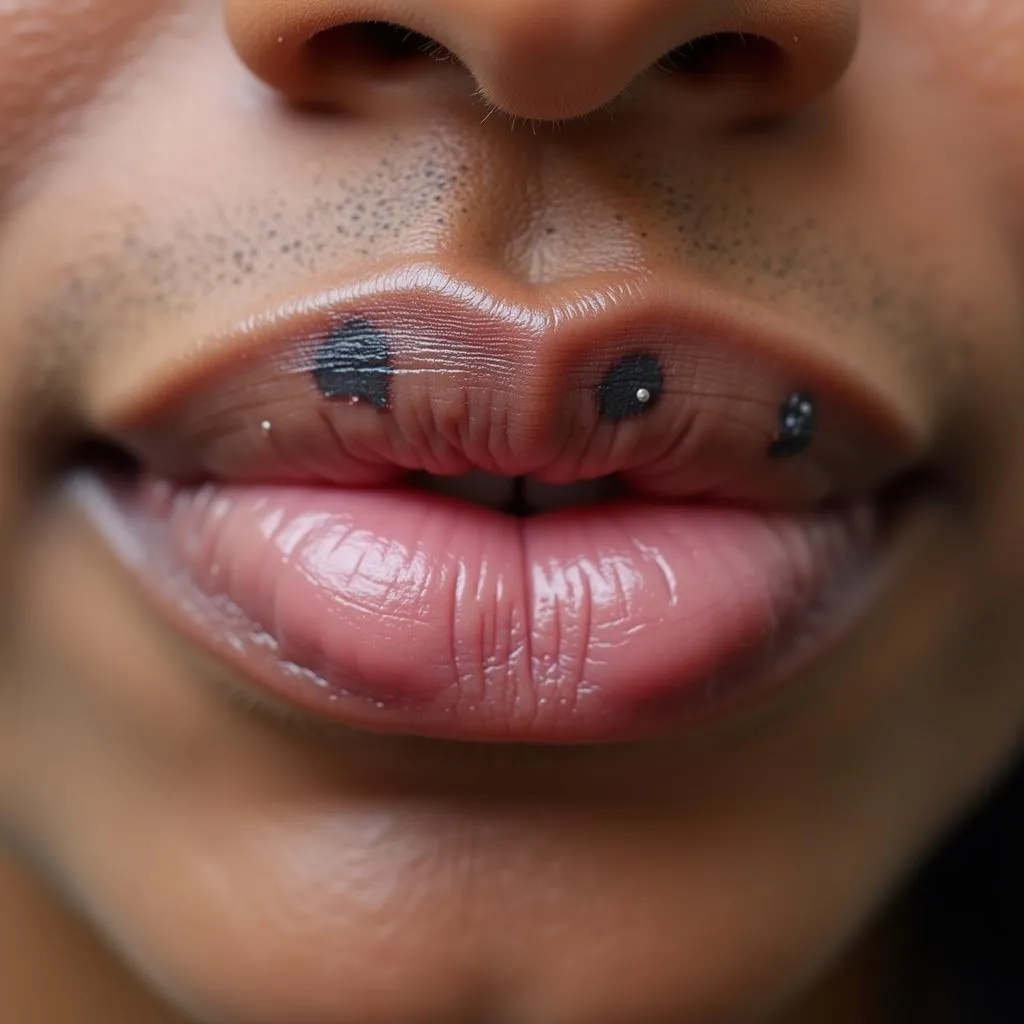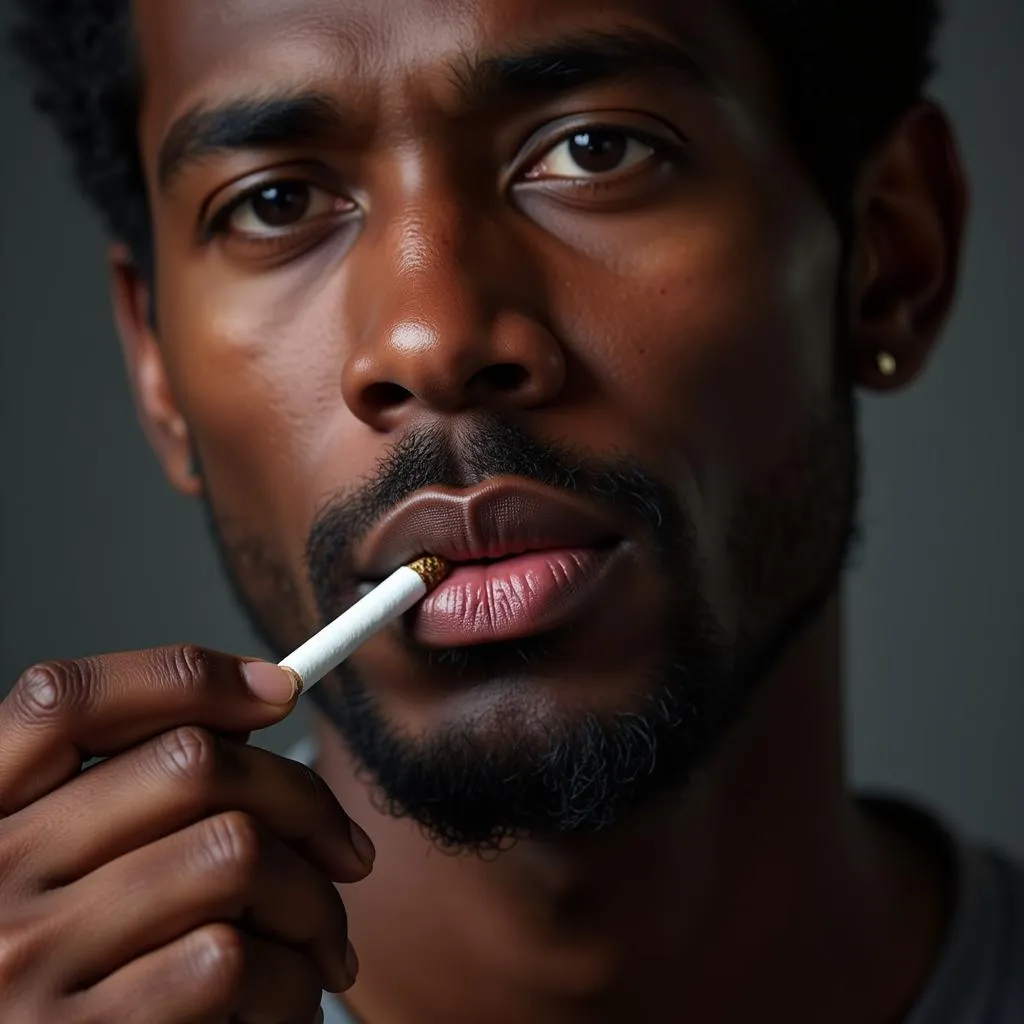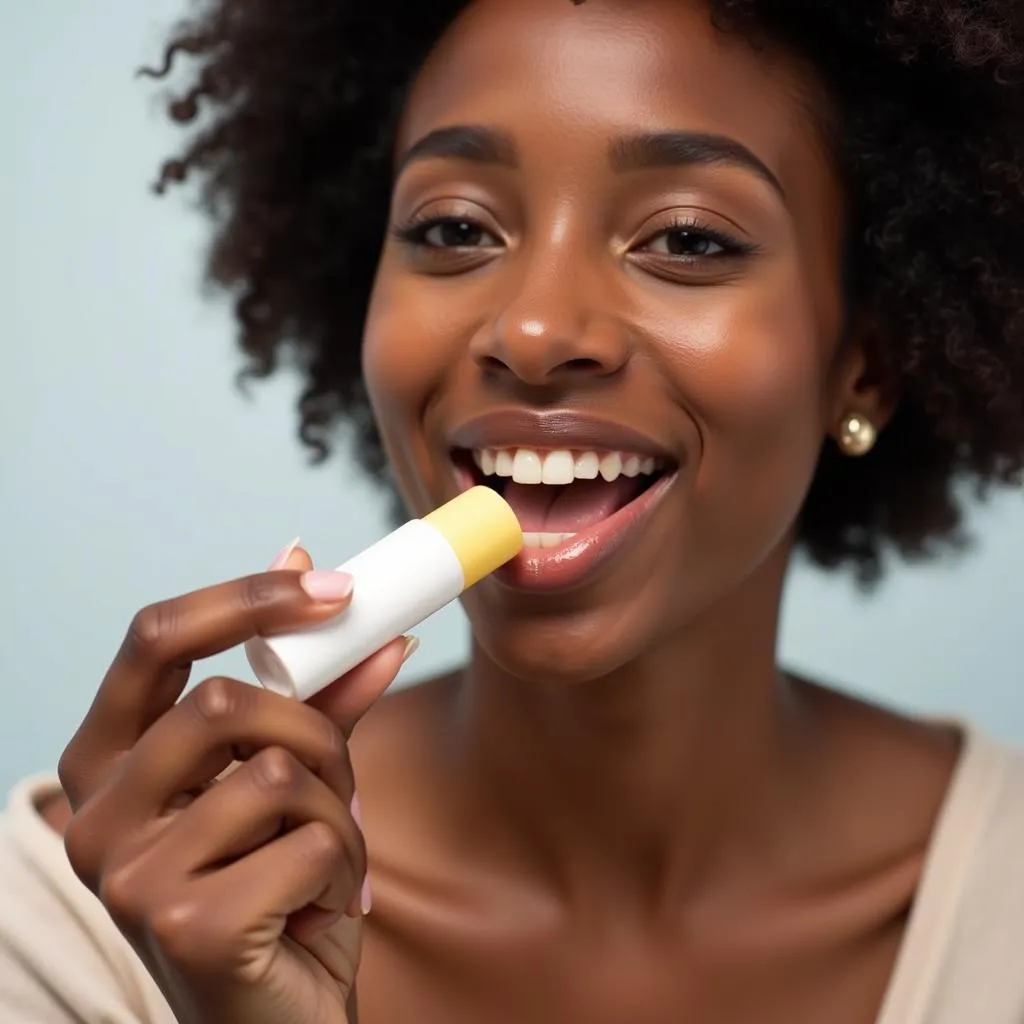Understanding Bottom Lip Discoloration on African Americans
Bottom lip discoloration, a darkening or alteration in the natural pigment of the lower lip, can be a source of concern for anyone, especially individuals with darker skin tones like African Americans. While often harmless, this pigmentation change can sometimes signal underlying medical conditions. This article delves into the various causes of Bottom Lip Discoloration On African Americans, exploring both common and less-known factors, offering insights into potential treatments, and empowering individuals to seek appropriate medical advice.
 Dark spots on African American lip
Dark spots on African American lip
Common Causes of Bottom Lip Discoloration
Several factors can contribute to bottom lip discoloration in African Americans, ranging from environmental influences to genetic predispositions. Here are some of the most prevalent causes:
1. Sun Exposure: Hyperpigmentation’s Role
Excessive sun exposure tops the list. Just as with other parts of the skin, the lips are susceptible to the sun’s ultraviolet (UV) rays. Overexposure can trigger the overproduction of melanin, the pigment responsible for skin color, leading to hyperpigmentation – a darkening of the affected area. In individuals with darker skin tones, like African Americans, this hyperpigmentation can manifest as dark spots or patches on the lower lip.
2. Smoking Habits: A Leading Culprit
Smoking is another major contributor to lip discoloration. The nicotine and tar in cigarettes can stain the lips directly, causing a brownish discoloration over time. Moreover, smoking restricts blood flow, depriving the lips of oxygen and nutrients essential for maintaining their natural color.
 African American male with lip discoloration smoking cigarette
African American male with lip discoloration smoking cigarette
3. Medications: Unforeseen Side Effects
Certain medications, while beneficial for overall health, can have side effects, including lip discoloration. Some antibiotics, antipsychotics, and chemotherapy drugs are known to cause hyperpigmentation as a side effect. If you notice changes in your lip color after starting a new medication, consult your doctor to discuss potential alternatives or management strategies.
4. Medical Conditions: Underlying Health Factors
While less common, underlying medical conditions can also manifest as bottom lip discoloration. Conditions like Addison’s disease (affecting hormone production), hemochromatosis (iron overload), and certain autoimmune disorders can disrupt melanin production and lead to pigmentation changes.
Addressing Lip Discoloration: Treatment and Prevention
Understanding the cause of your lip discoloration is crucial for effective treatment.
Consulting a Dermatologist: The First Step
If you notice persistent or worsening lip discoloration, consult a dermatologist. They can determine the underlying cause through a physical examination, review of your medical history, and potentially a biopsy.
Treatment Options: From Topical Creams to Laser Therapy
Treatment for lip discoloration varies depending on the cause. Topical creams containing hydroquinone, retinoids, or kojic acid can help lighten darkened areas. Chemical peels and laser therapy offer more intensive treatments to exfoliate the outer layer of skin and reduce hyperpigmentation.
Preventive Measures: Shielding Your Lips from Harm
Prevention plays a vital role in maintaining lip health and preventing discoloration. Protect your lips from the sun’s harmful rays by wearing a lip balm with an SPF of 30 or higher, especially during peak sun hours. Avoiding smoking is paramount, not just for lip health but for overall well-being.
 African American woman applying lip balm
African American woman applying lip balm
Conclusion: Taking Charge of Your Lip Health
Bottom lip discoloration in African Americans can stem from a variety of factors. While often benign, it’s essential to understand the potential causes and seek professional medical advice for accurate diagnosis and treatment. By adopting a proactive approach to lip care, including sun protection and healthy lifestyle choices, individuals can maintain optimal lip health and minimize the risk of discoloration.

